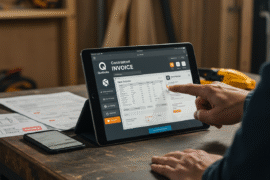This article may contain references to products or services from one or more of our advertisers or partners. We may receive compensation when you click on links to those products or services. Nonetheless, our opinions are our own.
The information presented in this article is accurate to the best of our knowledge at the time of publication. However, information is subject to change, and no guarantees are made about the continued accuracy or completeness of this content after its publication date.
- Introduction
- How Zero-Based Budgeting Works
- Definition and Core Concepts
- History and Origins of Zero-Based Budgeting
- Zero-Based to Traditional Budgeting
- Pros and Cons of Each Method
- Financial and Operational Benefits of ZBB
- Business Use and Results
- How to Start With Zero-Based Budgeting
- Summing Up Zero-Based Budgeting Principles
- Frequently Asked Questions
- Recommended Reads
Introduction
Zero-Based Budgeting (ZBB) is a way to make a budget that starts fresh each time. It does not use past numbers or old budgets to plan for the new one. With ZBB, you need to look at and think about every cost every time you make a budget. This way, you have to be careful with your choices. It helps stop waste and spending out of habit. For both businesses and people, ZBB helps make money matters clear and focused on set goals. If you want to cut costs, save more, or make sure your spending lines up with what matters most, zero-based budgeting is a good way to get a handle on your money. This method explains where it started, how it works, what you get out of it, and how you can use it in your own money planning.
How Zero-Based Budgeting Works
Zero-Based Budgeting means you start each budget period at zero. You do not use what you spent last time as the number for this time. In this plan, every cost has to be explained and approved before you get any money. This helps you to see your money goals in a new way. It also gets rid of lazy or set ways of handling your budget. ZBB can be used by people or by groups. It asks for a reason for every cost. This helps cut waste and makes sure that money goes to things that matter.
Definition and Core Concepts
Zero-Based Budgeting means you start each budget period with nothing set aside yet. You do not bring over any costs from before. You have to look at each cost to see if it is really needed and make sure it fits with your money goals. Nothing is added unless you can show it is needed.
- Zero Base: The plan does not assume or set aside any expenses at the start.
- Line Item Review: Each cost is looked at on its own for a close review.
- Decision Packages: Activities are grouped together and put in order based on how important they are and what they cost.
- Justification Requirement: Every dollar spent must have a clear reason.
This way helps people stay on track with their money and be open about how they spend it. It also makes sure that things are moving in the right direction. You can use it in both daily work with a team and with your own money at home.
History and Origins of Zero-Based Budgeting
Zero-Based Budgeting was made by Peter Pyhrr, who worked as a manager at Texas Instruments in the 1970s. He wanted to make sure people keep better track of money and that spending matches what the company thinks is most important. The idea got more notice when Jimmy Carter, who was the Governor of Georgia, put it to use for the whole state. After that, parts of ZBB were used in how the United States made its federal budgets. While ZBB had some problems in big government systems because it is hard to use, the method has worked well in companies. Companies like Kraft Heinz and Anheuser-Busch InBev have brought ZBB into their plans for handling money. They use it to save costs and spend smarter.
Voted "Best Overall Budgeting App" by Forbes and WSJ
Monarch Money helps you budget, track spending, set goals, and plan your financial future—all in one app.
Get 50% OFF your first year with code MONARCHVIP
Zero-Based to Traditional Budgeting
ZBB is different from traditional budgeting. Traditional budgeting often uses last year’s numbers and makes small changes to them. ZBB does not do this.
| Key Aspect | Traditional Budgeting | Zero-Based Budgeting (ZBB) |
|---|---|---|
| Basis of Budgeting | Uses last year’s figures | Starts from zero each cycle |
| Justification | Recurring expenses are assumed | All expenses must be justified |
| Decision-Making | Based on minor adjustments | Based on needs and strategic goals |
| Focus | Past spending habits | Current objectives and priorities |
| Time Investment | Faster, routine process | Time-intensive but comprehensive |
Traditional budgeting can miss shifts in what people need now, and it may not spot things that waste money or time. ZBB lets you look closely at where money goes and helps match your spending to current needs.
Pros and Cons of Each Method
Advantages of Zero-Based Budgeting
- Cuts out extra spending
- Helps with smart money planning
- Makes things clear and open
- Matches the budget with what is needed right now
- Helps people stick to better money habits
Disadvantages of Zero-Based Budgeting
- This takes a lot of time and hard work
- You may need a lot of extra training or changes to how things are done
- Teams who are used to doing things step by step might not want to change
Advantages of Traditional Budgeting
- Simpler to use
- Faster and more of a usual way
- Good when costs stay the same and can be guessed
Disadvantages of Traditional Budgeting
- Can keep old ways of spending going
- There is less insight into what is making up the cost
- It may lead to money and things going to the wrong place
Financial and Operational Benefits of ZBB
- Strategic Allocation: Makes sure that every dollar you spend goes toward the goals you have now in your business or life
- Improved Decision-Making: Helps people make choices based on facts and reduces spending that is not needed
- Better Use of Resources: Shows you where there are double jobs or extra steps in how things get done or in how money is spent
- Cultural Change: Gets everyone to pay more attention to what things cost in their team or home
Business Use and Results
In business, ZBB pushes teams to check if every cost is needed and worth it. They do not just ask for a bigger budget each year. Instead, every department has to show clear reasons for every cost.
- Better teamwork across departments
- Smarter use of limited resources
- Clearer money view for leaders
- Stronger focus on main goals
How to Start With Zero-Based Budgeting
- Budgeting software or spreadsheets (like YNAB, EveryDollar, Excel)
- Past money records
- Teamwork or being responsible to yourself
- Clear money targets or main plans
How to Apply the Zero-Based Budgeting Method
Step 1: Identify All Expenses and Activities
Categorize all spending. Start with fixed costs like rent. Next, look at expenses that change, like groceries. Also, include spending you choose, such as streaming services.
Step 2: Justify Every Expense
Make sure that each cost helps reach a clear goal or need. If a cost does not give value, take it out of the budget.
Step 3: Prioritize Spending
Put expenses in order by what matters most. Pay for the things you need first, like a place to live and paying back any money you owe. Then use any money left for savings and your own goals.
Step 4: Monitor and Adjust
Check your budget often every month or each quarter. Change your expenses when your income, goals, or needs change.
Summing Up Zero-Based Budgeting Principles
Zero-Based Budgeting gives a careful and planned way to handle money for both homes and businesses. With this method, you have to check all spending from the start in each new cycle. This helps you cut out any costs that are not needed and makes sure your money plans fit your goals. It does take time and a close look at your budget, but in the end, you get more say in your spending, spend with purpose, and waste less. For people, ZBB helps you see where all the money goes. For companies, it helps everyone to take charge and make better choices. As prices go up and things in money get trickier, ZBB is a strong way to get more out of every budget and make things better for all.
Frequently Asked Questions
Is zero-based budgeting suitable for individuals or only businesses?
Zero-based budgeting helps both people and businesses. People get help from its clear plan and focus, while businesses use it to connect their spending to their goals. Each group can use ZBB to cut costs and stick to priorities.
How often should I update a zero-based budget?
Change ZBB when you begin a new budget cycle. This could be done each month, every three months, or once a year. You need to check it often so it always matches your income, goals, and what matters most to you.
What challenges does ZBB present for organizations?
Some of the problems with this are that it takes a lot of time, teams need to get more training, and some people do not like to change. The process also means you have to keep a close eye on costs all the time and talk often with other departments.
Can ZBB help reduce unnecessary spending?
Yes. Because all spending must be explained, ZBB can find waste and help keep things running well. It cuts down on buying things on a whim and helps you put bigger goals and saving for the future first.

Reviewed and edited by Albert Fang.
See a typo or want to suggest an edit/revision to the content? Use the contact us form to provide feedback.
At FangWallet, we value editorial integrity and open collaboration in curating quality content for readers to enjoy. Much appreciated for the assist.
Did you like our article and find it insightful? We encourage sharing the article link with family and friends to benefit as well - better yet, sharing on social media. Thank you for the support! 🍉
Article Title: What Is Zero-Based Budgeting?
https://fangwallet.com/2025/07/12/what-is-zero-based-budgeting/The FangWallet Promise
FangWallet is an editorially independent resource - founded on breaking down challenging financial concepts for anyone to understand since 2014. While we adhere to editorial integrity, note that this post may contain references to products from our partners.
The FangWallet promise is always to have your best interest in mind and be transparent and honest about the financial picture.
Become an Insider

Subscribe to get a free daily budget planner printable to help get your money on track!
Make passive money the right way. No spam.
Editorial Disclaimer: The editorial content on this page is not provided by any of the companies mentioned. The opinions expressed here are the author's alone.
The content of this website is for informational purposes only and does not represent investment advice, or an offer or solicitation to buy or sell any security, investment, or product. Investors are encouraged to do their own due diligence, and, if necessary, consult professional advising before making any investment decisions. Investing involves a high degree of risk, and financial losses may occur including the potential loss of principal.
Source Citation References:
+ Inspo
There are no additional citations or references to note for this article at this time.












































